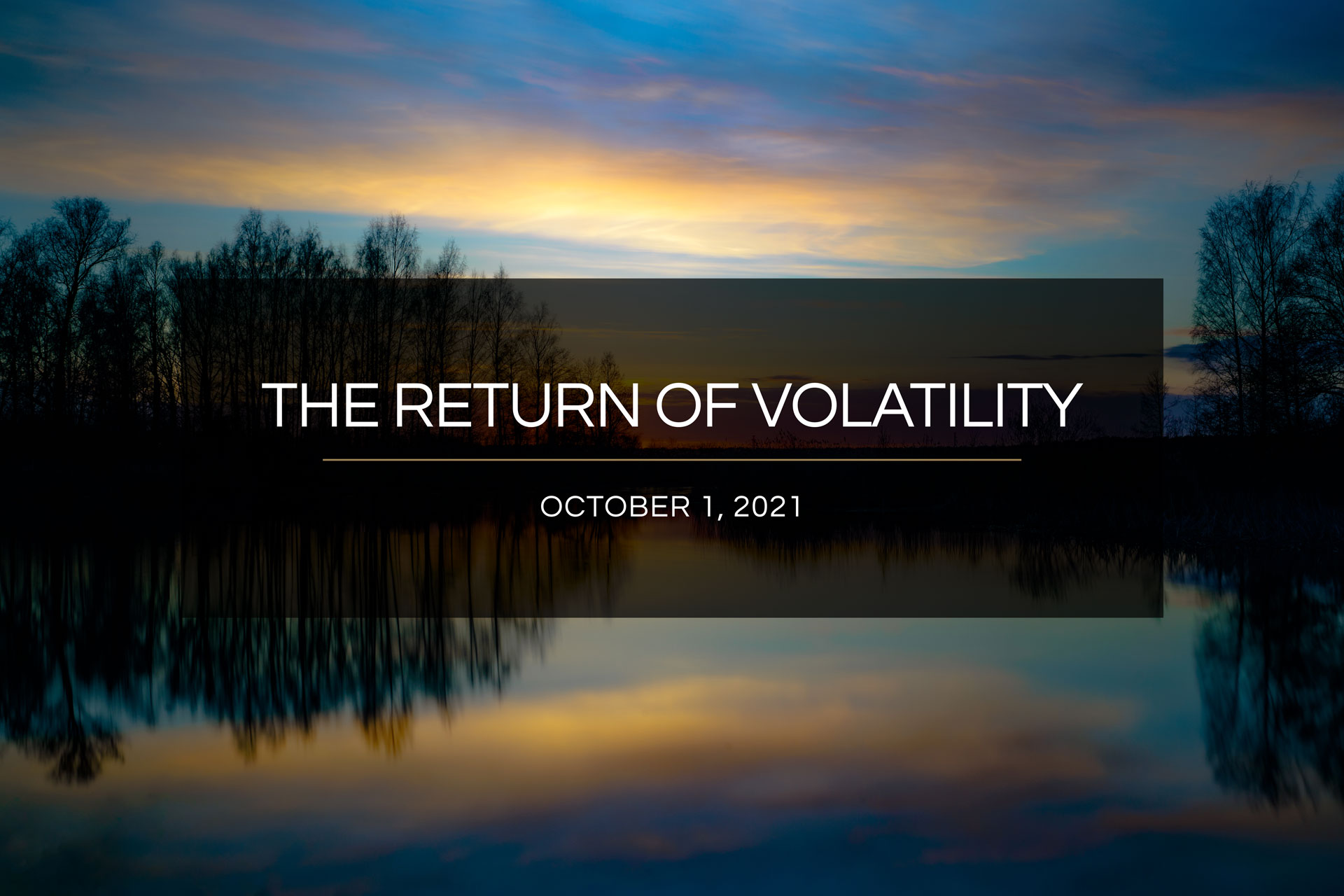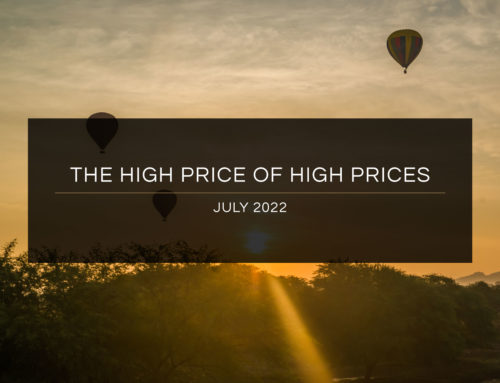THE RETURN OF VOLATILITY
October 1, 2021
In general for the last year and a half much of normal life had a new element of uncertainty injected into it due to the pandemic. In financial markets, however, the majority of that time has actually been a period of relative calm. From early November of 2020 until now there had not been a stock market drop of 5%. It is quite common throughout history to have these types of market drops on a fairly routine basis. The questions now lie with the unique circumstances that have brought economies and markets to this point following the economic and social dynamics of the pandemic period.
Early on, the various shutdowns worldwide caused an economic disruption on a major scale. The reaction through fiscal and monetary stimulus was actually more than proportional in response. For a time, this created a situation better than normal for many people. The stimulus has outstripped the economic downdraft and has meant trillions of excess dollars flowing through the system. Some of the hangover from this is occurring now.
Price inflation in just about everything is occurring. Commodities have staged the largest gains since the US and Chinese construction booms of the mid-2000s. Wages are also increasing substantially as a strong economy is having a hard time drawing enough people back into the workforce. The production of many goods is hampered by supply chains that are still disrupted for numerous reasons. So we now have the paradox of strong demand but a shortage in supply. For many years, the exact opposite had been occurring which kept pushing inflation lower and lower.
The good news is pent up demand from supply shortages should allow the economic cycle to be extended for quite some time. For example, inventories of cars are at a multi-decade low. Even if a car purchase is deferred now, eventually it will have to take place in order to replace older vehicles.
The bad news is we are all having to pay for the stimulus now through inflation. This takes many forms. We may directly have to pay more at the store or restaurant. Or we may have to pay indirectly by not being able to get the item we want at this time or through lower interest received on bank accounts and bonds.
The recent stock market drop in September was in great part caused by concerns about inflation. Higher input prices are reducing the profit for some companies. Higher prices will also force the Federal Reserve and other central banks to be less accommodative with policy in the coming months. Interest rates tend to rise when expectations of inflation become more pervasive.
The path of inflation from here is going to quite important for the markets. There are some companies that will do very well. For example, as demand is driving up commodity prices, certain producers will thrive. These are in many cases companies that had languished for over a decade during a period of disinflation and slow demand. Other types of companies may struggle if they are end users of commodities or have to refinance debt at higher interest rates. Being in the right place may be more important than being in or out of the market.
There are certainly unique dynamics that would have seemed impossible at the start of the pandemic. Crude oil traded briefly at a negative price during early 2020, whereas we are seeing $80 a barrel oil currently which is the highest it has been in seven years. China uses predominately coal for power, a fuel that is trading at an all-time high. Natural gas shortages in Europe are causing blackouts, which in turn are driving demand and prices even higher. In a world that is trying to diversify energy sources, fossil fuels still drive the majority of power, meaning there is significant economic impact from sharp price increases.
The labor force is another dynamic that will determine a path for the markets. It appears fewer people are coming back to the work force at this point, despite the fact that job openings are more plentiful than ever and wages offered are increasing. It will also take time to train workers to meet demand in specialized roles. The construction industry shrank materially in 2008 and never fully recovered. Now, there is a construction boom that is limited by both goods and labor.
The broad perspective on the economy and markets is a mixed lot. There will likely be strong growth in the coming quarters, but it will come at the cost of higher prices and sporadic disruptions. Also, valuations for certain investments remain high as a result of low interest rates. Some of these prices could be constrained as the bond market adjusts to more inflation. If inflation does remain, it will be important to protect assets from the eroding of purchasing power, something not easily done in a bank account earning a fraction of one percent.
The markets will likely have volatility as they always have had before, meaning no return is risk free. So, the goal continues to be finding real prospective value in a changed and unique market environment. The other challenge is seeking the right level of diversification for an investor given the emergence of new risks such as inflation. The challenges are significant but so are the opportunities!




